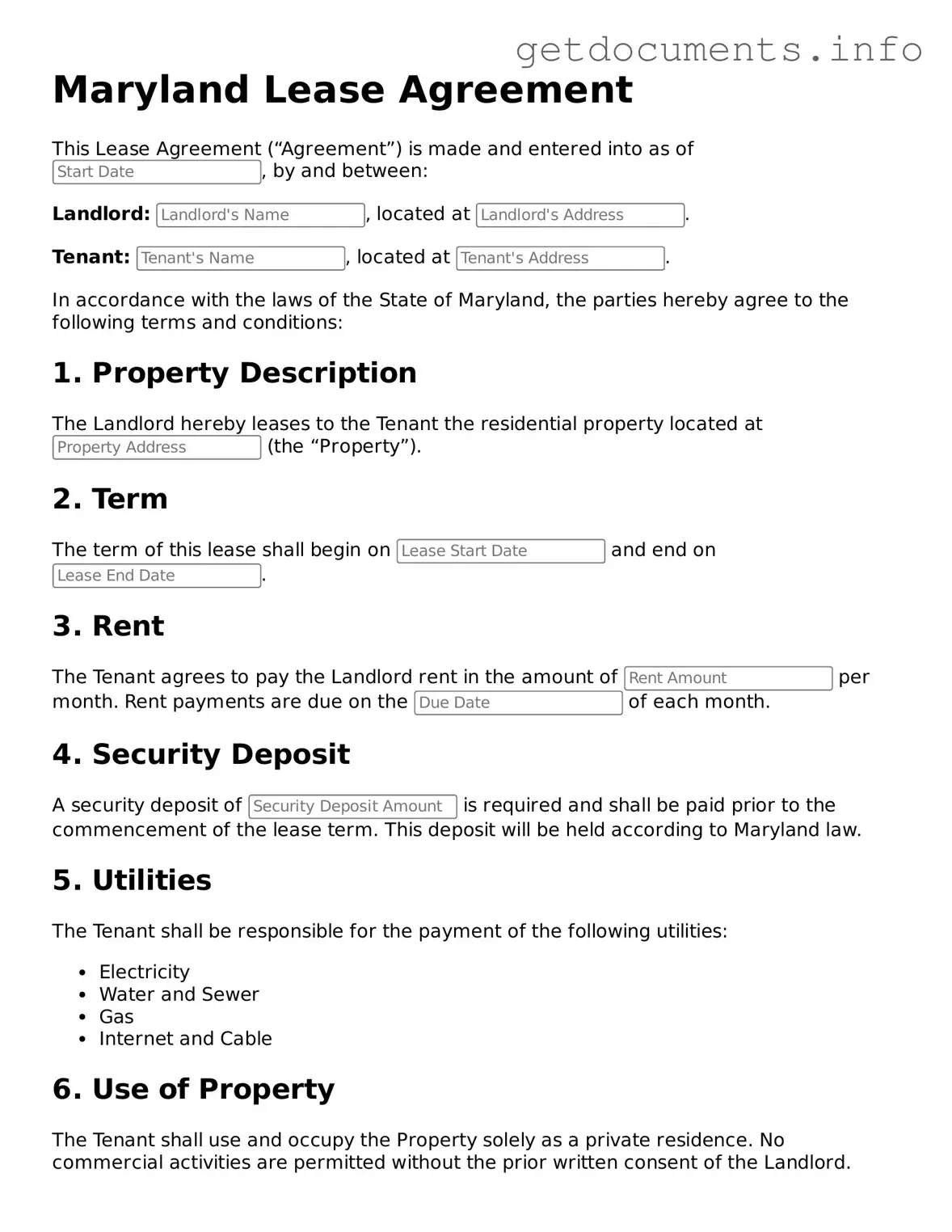Free Lease Agreement Template for Maryland
A Maryland Lease Agreement form is a legal document that outlines the terms and conditions under which a landlord rents property to a tenant. This agreement serves to protect the rights of both parties, detailing essential aspects such as rental payments, property maintenance, and duration of the lease. Understanding this form is crucial for ensuring a smooth rental experience, so consider filling out the form by clicking the button below.
Access Lease Agreement Editor
